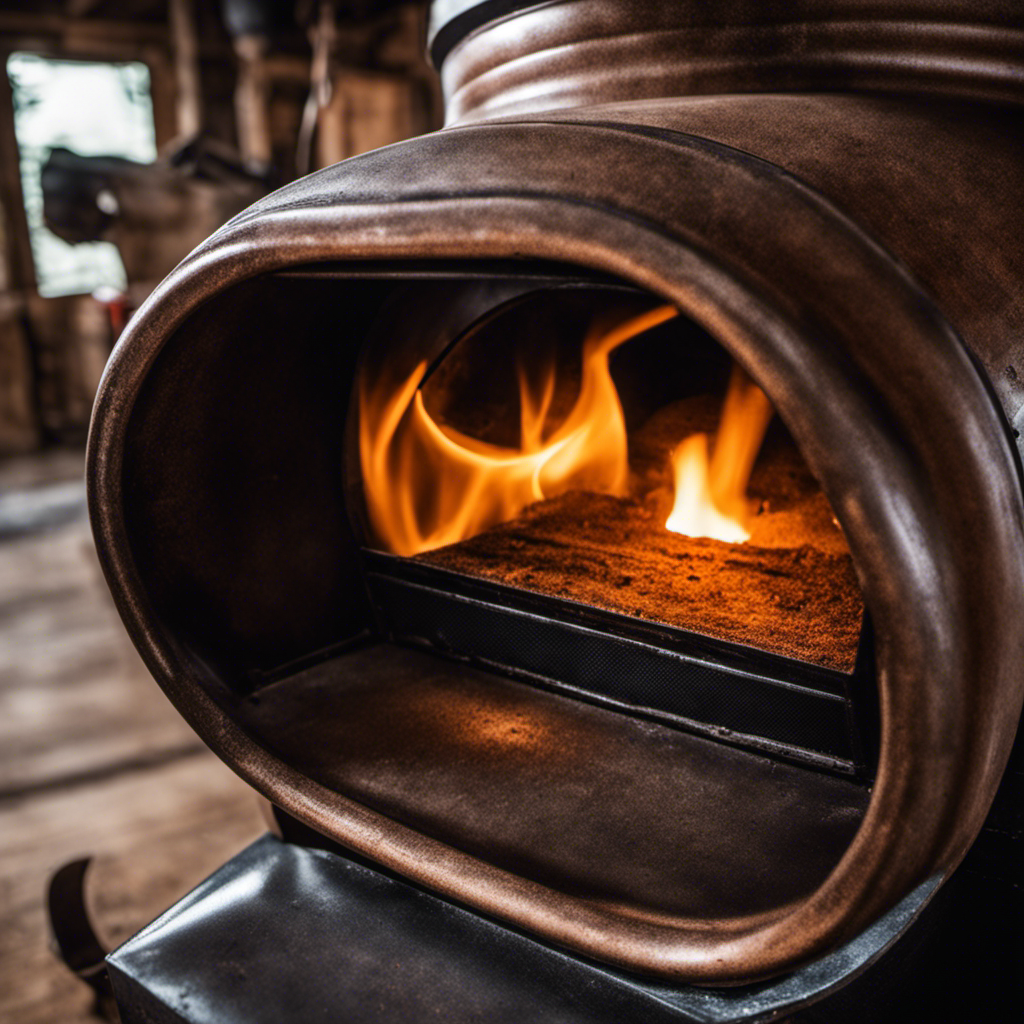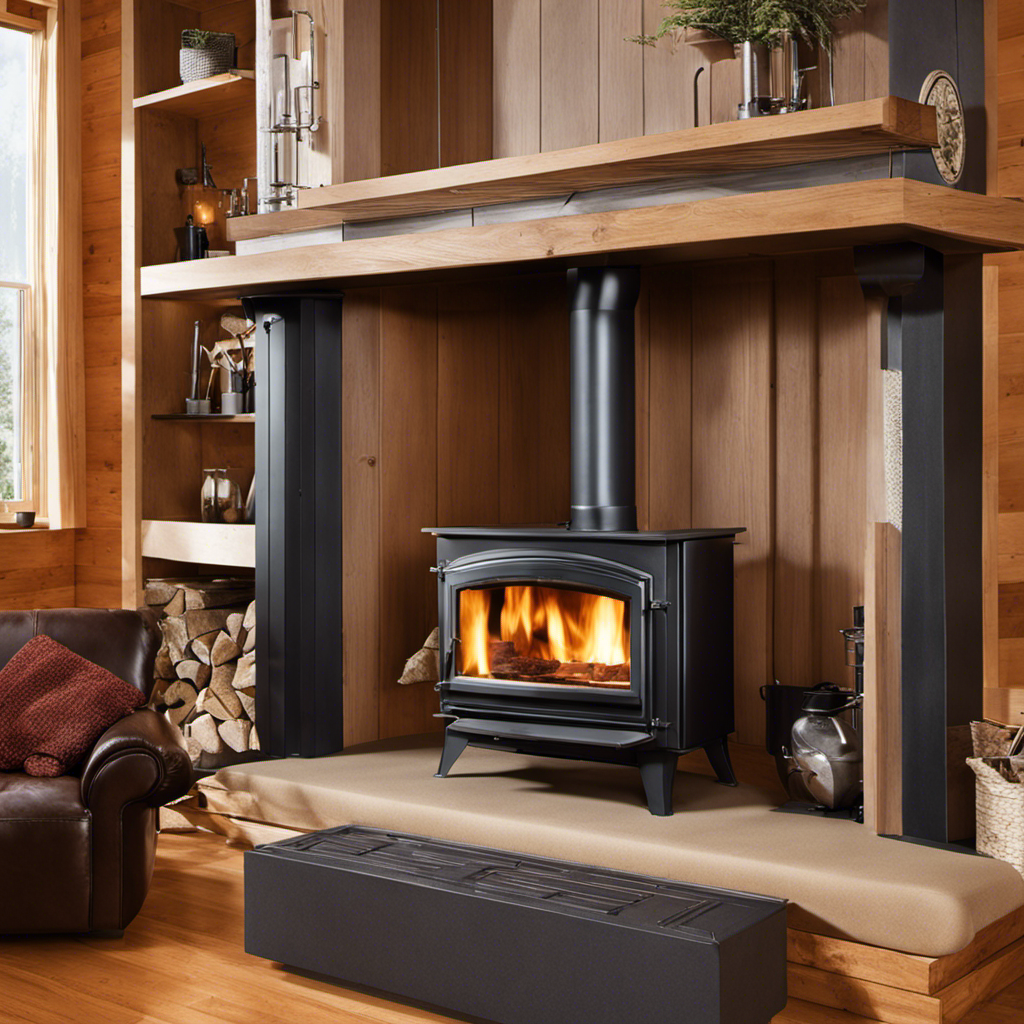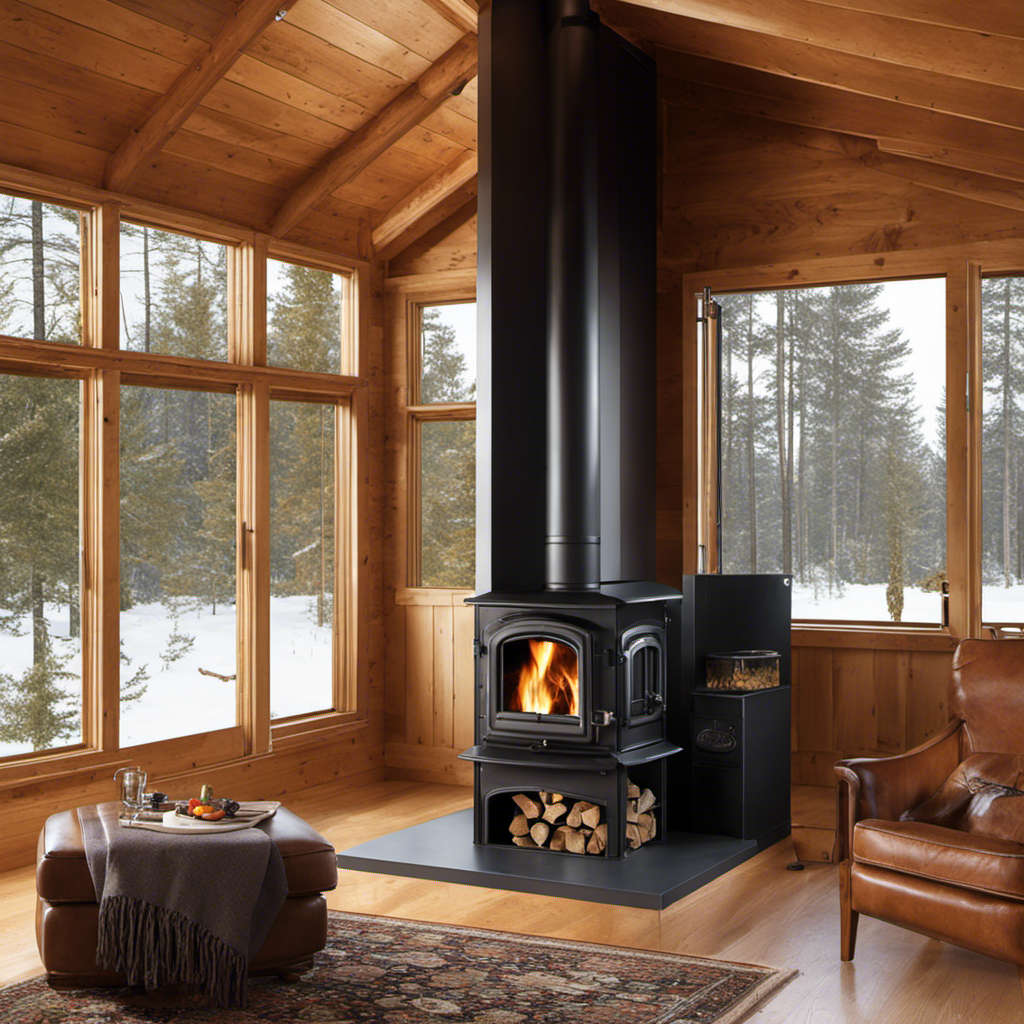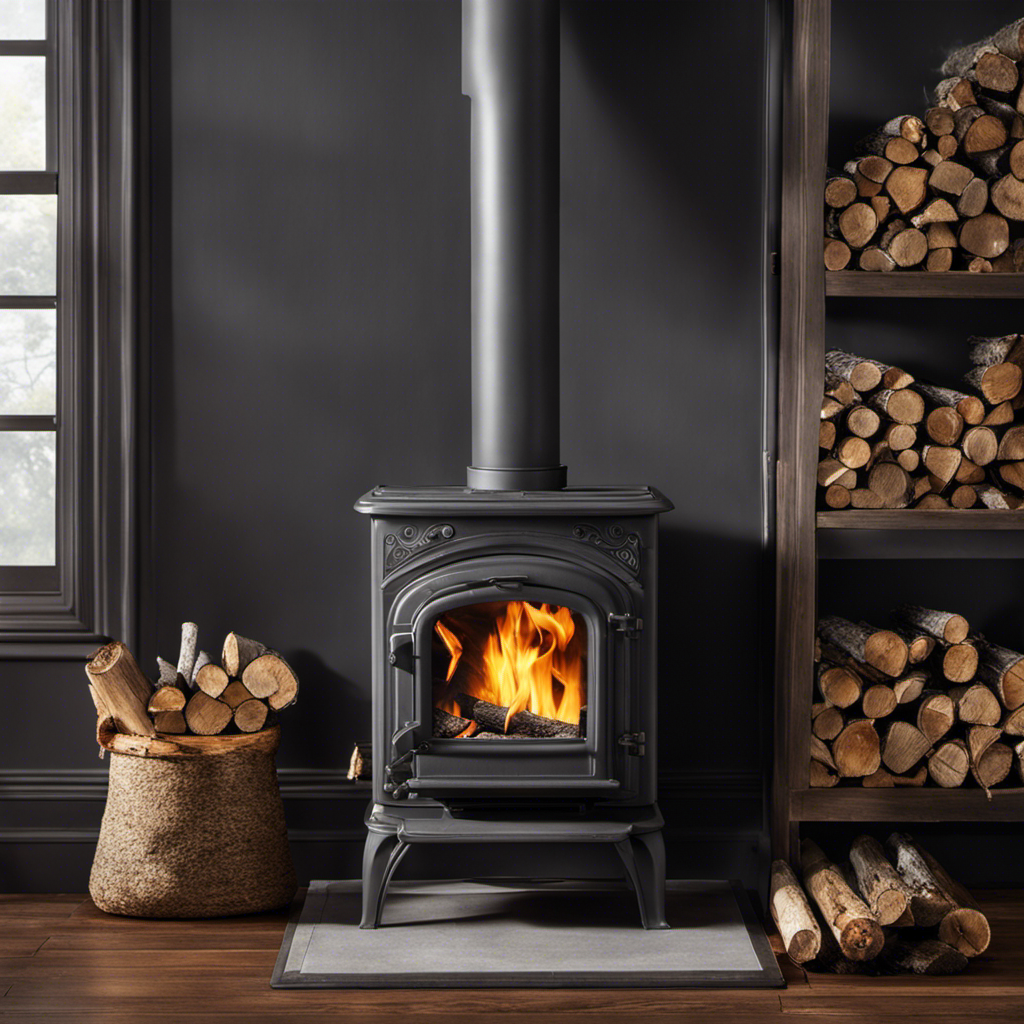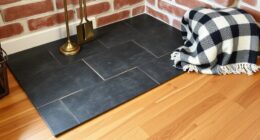As someone passionate about wood stoves, I have learned to appreciate the essential function the catalytic converter serves in maintaining peak performance.
But how do you know if it’s gone bad?
Well, fear not! In this article, I’ll guide you through the telltale signs of a malfunctioning catalytic converter on your wood stove.
From strange odors to reduced heat output, we’ll explore the common issues that indicate a faulty converter.
So, let’s dive in and diagnose the problem together!
Key Takeaways
- A malfunctioning catalytic converter on a wood stove can lead to the release of harmful emissions and decreased efficiency.
- Signs of a bad catalytic converter include black smoke, clogged or damaged converter, and build-up of creosote or debris.
- Regular cleaning and maintenance, as well as using dry and seasoned wood, can help minimize issues with the catalytic converter.
- Steps to diagnose a faulty catalytic converter include checking for decreased efficiency, inspecting for physical damage, and comparing the temperature to the recommended range.
Understanding the Function of a Catalytic Converter on a Wood Stove
I’ve been researching and I’ve learned that a catalytic converter plays a crucial role in reducing emissions from my wood stove.
The maintenance of a wood stove is essential to ensure its optimal performance and minimize environmental impact.
By using a catalytic converter, the benefits are significant. This device is designed to convert harmful gases and pollutants into less harmful substances through a chemical reaction. It acts as a catalyst, speeding up the conversion process and reducing the release of harmful emissions into the atmosphere.
The catalytic converter also helps to improve the efficiency of the wood stove by promoting a more complete combustion process. This not only reduces pollution but also increases fuel efficiency, saving both money and resources.
Regular maintenance, including cleaning and inspecting the catalytic converter, is crucial to ensure its proper functioning and prolong its lifespan.
Signs of a Malfunctioning Catalytic Converter on Your Wood Stove
One of the signs that indicate a malfunctioning catalytic converter on my wood stove is the presence of black smoke coming out of the chimney. This issue can occur due to a few potential causes.
The first one is a clogged or damaged catalytic converter, which can lead to incomplete combustion of wood and the production of excessive smoke. Another cause could be a build-up of creosote or other debris in the converter, obstructing its function.
Regular maintenance is crucial to prevent these problems. To maintain the catalytic converter on my wood stove, I make sure to clean it regularly, removing any accumulated creosote or debris. Additionally, proper burning techniques, such as using dry and seasoned wood, can help minimize the chances of a malfunctioning catalytic converter.
Common Issues That Indicate a Bad Catalytic Converter on Your Wood Stove
When the catalytic converter on my wood stove fails, it can result in decreased efficiency and increased emissions, which are common issues indicating a bad converter. Troubleshooting and maintaining the catalytic converter is crucial to ensure optimal performance and minimize environmental impact. Here are some troubleshooting tips and maintenance techniques that can help identify and address potential issues:
| Troubleshooting Tips | Maintenance Techniques |
|---|---|
| 1. Check for unusual odor or smoke | 1. Regularly clean the catalytic converter to remove accumulated soot and debris |
| 2. Monitor the temperature | 2. Inspect the converter for any signs of physical damage or corrosion |
| 3. Examine the color of the flames | 3. Replace the converter if it is beyond repair or fails to meet emissions standards |
| 4. Test the efficiency using an emissions analyzer | 4. Follow manufacturer’s guidelines for proper installation and usage |
Steps to Diagnose a Faulty Catalytic Converter on Your Wood Stove
I recently learned the steps to diagnose a faulty catalytic converter on my wood stove, and it’s important to share this knowledge with others.
When it comes to diagnosing wood stove problems, specifically troubleshooting wood stove issues related to the catalytic converter, there are a few key steps to follow.
First, check for signs of a malfunctioning catalytic converter, such as decreased efficiency or a lack of heat production.
Next, inspect the converter for physical damage, such as cracks or leaks.
Additionally, you can perform a visual inspection of the catalyst material itself, looking for discoloration or deterioration.
Finally, if necessary, you can use a diagnostic tool to measure the converter’s temperature and compare it to the recommended range.
How to Address and Replace a Bad Catalytic Converter on Your Wood Stove
There are several steps you can take to address and replace a bad catalytic converter on your wood stove.
When it comes to troubleshooting a faulty catalytic converter, the first thing you should do is check for any signs of damage or wear. Look for cracks, holes, or discoloration on the converter itself. If you notice any of these issues, it’s likely time for a replacement.
To replace the catalytic converter, start by disconnecting it from the stove and removing any mounting hardware. Take note of the make and model of your wood stove to ensure you purchase the correct replacement.
Once you have the new converter, simply install it in the reverse order of removal. Remember to follow all safety precautions and consult your stove’s manual for specific maintenance techniques.
Frequently Asked Questions
Can a Malfunctioning Catalytic Converter on a Wood Stove Cause a Fire Hazard?
A malfunctioning catalytic converter on a wood stove can indeed pose a fire hazard. It’s important to regularly inspect and test the converter for any signs of damage or malfunction to ensure safe operation.
Do All Wood Stoves Have a Catalytic Converter?
Do wood stoves with catalytic converters burn cleaner? Yes, they do. They help reduce emissions by up to 90%. The benefits of having a catalytic converter on a wood stove include improved air quality and increased energy efficiency.
Can a Clogged Catalytic Converter Affect the Efficiency of My Wood Stove?
A clogged catalytic converter can significantly impact the efficiency of a wood stove. It restricts air flow, preventing proper combustion and reducing heat output. Regular maintenance and cleaning are crucial to ensure optimal performance.
Is It Possible to Clean a Bad Catalytic Converter on a Wood Stove Instead of Replacing It?
Cleaning a bad catalytic converter on a wood stove is not recommended. It’s crucial to replace it when it’s faulty as alternative solutions are limited. Proper maintenance and regular inspection are key to ensuring optimal performance.
What Are the Potential Health Risks Associated With a Faulty Catalytic Converter on a Wood Stove?
Regular maintenance and inspection of catalytic converters on wood stoves is crucial to prevent potential long term health risks associated with faulty converters. It’s important to be aware of the potential effects of exposure.
Conclusion
In conclusion, identifying a malfunctioning catalytic converter on your wood stove is crucial for maintaining its efficiency and safety. By understanding its function and recognizing common issues, you can diagnose and address any problems promptly.
Remember, addressing a faulty catalytic converter promptly will ensure optimal performance and reduce the risk of harmful emissions. So, don’t hesitate to take the necessary steps to replace a bad catalytic converter and keep your wood stove running smoothly.
Logan’s affair with adventure began in childhood. He hailed from a small town where vast forests bordered one side and endless shores stretched on the other. His days were spent exploring uncharted woods, climbing tall trees, or listening to the tales of old sailors. This early immersion in a world brimming with stories and mysteries became the foundation of his passion for writing.

